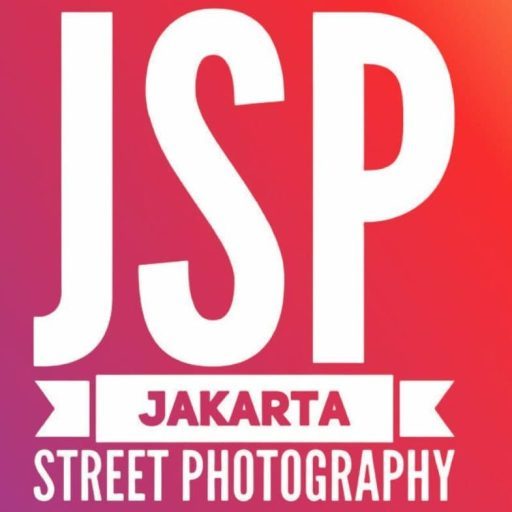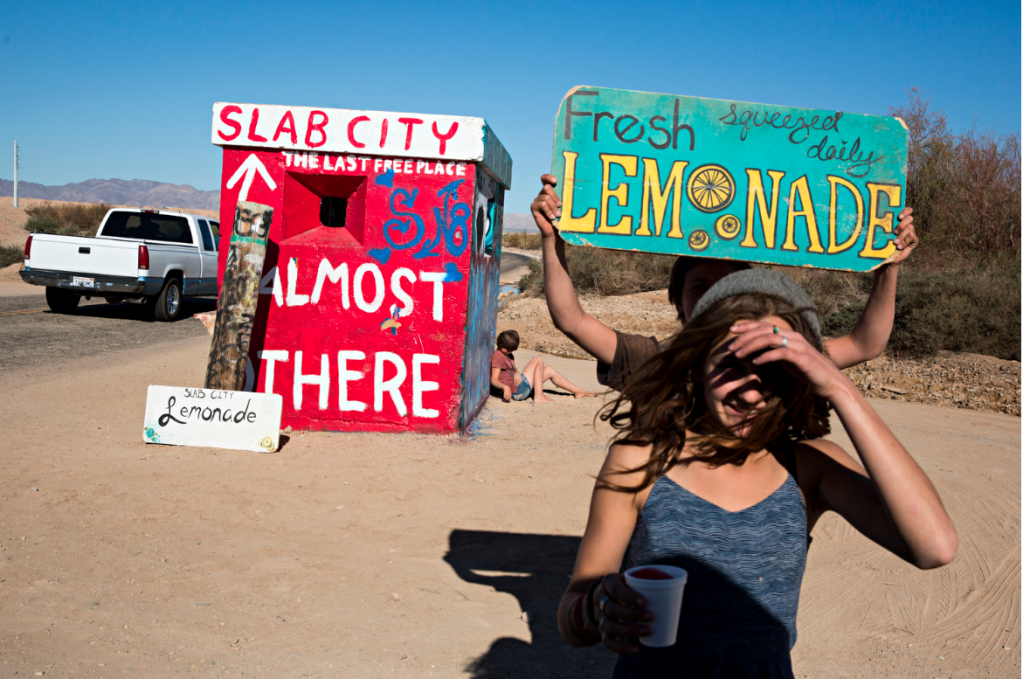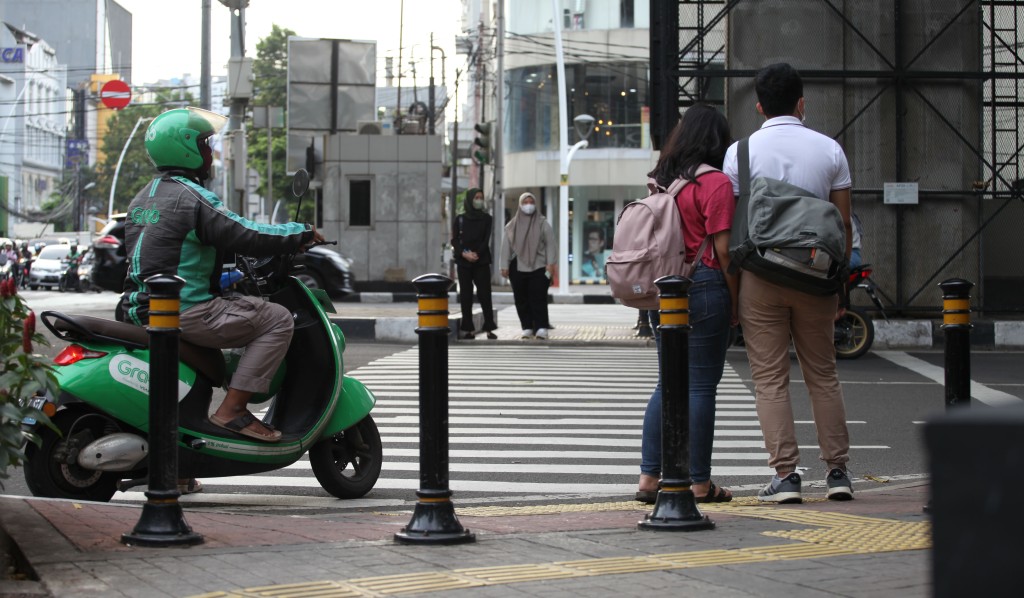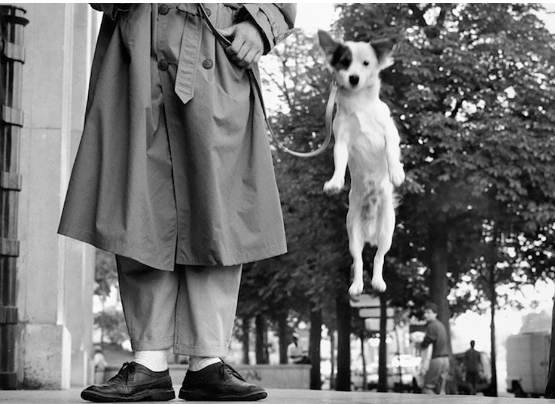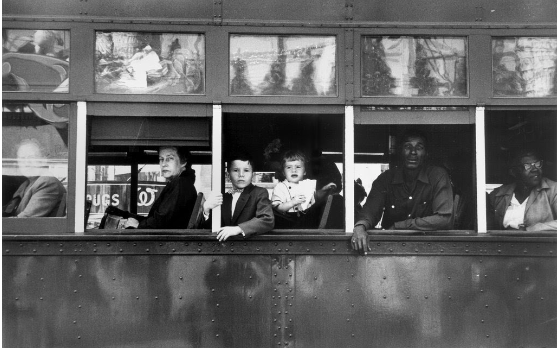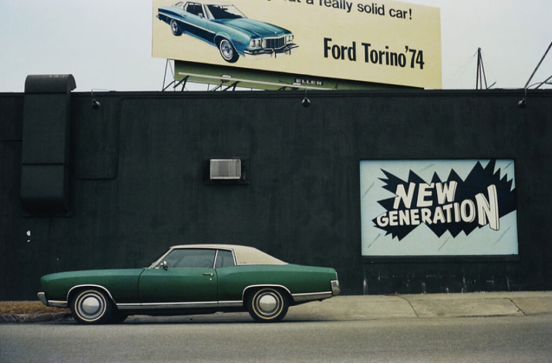Fantastic street photographs are readily available in every public space, but over-familiarity with our environment means we often miss out on special moments and scenes unfolding in front of us.
These street photography tips will help you see those decisive moments and learn to trust your instincts. Once you’ve picked up the confidence to get close to your subjects and you’ll be able to use your camera as a mirror of society and come away with unreal, witty and dramatic-looking shots.
Street Photography Tips from Matt Stuart
Before he discovered his passion for photography, Matt Stuart was a professional skateboarder and also indulged in a brief, ill-advised affair with Kung Fu. Matt’s father, keenly aware that his son wasn’t going to be the next Bruce Lee, introduced him to photography. Matt lives in London and makes his living shooting on the streets. More of his work can be found on Matt Stuart’s website.
1. Plan a street photography route
I have a street photography route. It’s made up from the places in London that are most fruitful – these are the places with the most people and also where the pavements are widest so there’s more room to work. Every now and then I’ll go ‘off-piste’ and try somewhere new.
2. When NOT to take photos on the street
The key to not interrupting a scene is to be quick. The longer you’ve been shooting street photography, the easier you’ll find it to take what you want and leave. It’s important to know if an image is worth taking, though. Ask yourself if it’s worth the hassle – for example, taking a picture of someone wiping a baby’s bottom is bound to get you in trouble, as is photographing a drug deal. I have a gauge of the people I’m going to photograph and if it’s worth it. I used to try to photograph fights when I saw them but I don’t now – it’s not worth aggravating two people whose adrenaline levels are soaring. All the attention can easily be turned to you, the person with the camera.
3. Street photography and the law
Whether or not you should worry about including commercial elements in your shots depends on what you’ll end up doing with them. If you sell them on to a stock library you may need to make sure that the image within the image is cleared. I don’t sell my pictures to stock libraries so I worry less about these issues. I’ve had a few run-ins with the police when I’ve been photographing on the streets – I stay polite and try to explain to them what I’m doing.
4. What to do when confronted
When people spot you taking a picture of them, smile – it works! Sometimes just looking at anything but the person you’re photographing is good too. A switched-off iPod is useful as if people ask you what you’re doing you can pretend to be listening to music.
5. Do I need permission to photograph people on the street?
I don’t get permission. I don’t interact with the people I’ve photographed. You only need permission/releases if you’re going to sell the picture for commercial use. I can’t imagine asking the people I photograph for releases, as it would take forever and probably be quite awkward.
6. How to avoid being spotted when shooting street scenes
• Wear dark clothes. Bright colours will make you stand out.
• Keep your elbows in when you’re shooting.
• Have the camera set. Don’t play around with exposures too much. Be ready to shoot and go.
• If you wear the camera around your neck, keep the strap high so there’s less movement between bringing the camera up to your face.
• Take the camera with you everywhere. Get so used to the camera that it feels like a second skin.
Street photography tips from Nick Turpin
Nick worked as a photographer on The Independent in the UK for seven years, leaving in 1997 to pursue his personal photographic ideas. He founded the international street photographers’ group, in-public, with the aim of bringing street photography to a new and wider audience. Nick makes his living by shooting on the streets for clients who include VW, Sony and IBM and he’s taught street photography at Tate Modern, Yale School of Art and on the Discovery Channel.
See his work at Nick Turpin’s website.
7. Learn from street photography books and photography websites
The best street photographs are moments, they contain a happening and usually one that, a moment ago, you didn’t see coming – that’s the difference between street photography and reportage, you’re not photographing a ‘subject’, you’re simply out to see what comes your way in the busy change and flux of a public place. Generally, street photographs are self-contained. It’s the humour, a narrative or some drama that makes them work without the presence of other images – they’re one-offs. Look at a lot of good street photography in books and on the web. See why the pictures work. See how the photographer made the joke or framed the moment. See what devices photographers have used on the street.
8. Street photography locations
Don’t try to look at and photograph a whole city, it’s overwhelming. Instead concentrate on a small section of a street or a corner – that’s where street pictures happen.
9. Choose interesting street photography subjects
Finding a subject can take lots of time. Often I’ll find someone who looks interesting and hang around or follow them, in the hope that something will happen or come the other way that suddenly makes a wonderful scene. One day I followed two bald men in suits; they looked interesting but they weren’t a picture on their own. First they went past a hat shop with lots of hats floating on poles that made an amusing Magritte-type picture. Then on a corner two workmen came in the opposite direction wearing hard hats and a lovely juxtaposition was made. I often create a picture like this – find one element and then try to add to it. Occasionally you’ll turn a corner and find a picture just waiting to be taken and then you have a mad scramble to get into the best position to shoot it.
10. Always carry your camera
I think most street photographs are made during the course of an ordinary day. Of course I go to the city specifically to shoot, but the number one rule is to carry your camera at all times, always be ready to make a picture… this improves your luck vastly.
11. Learn to work fast
I get the most satisfaction from shots taken so quickly that I barely had time to think about why I was taking them; pictures that are a raw reaction to a small trigger. I took one shot of a man running fast, outside Liverpool Street Station, predicting roughly where he’d be by the time I’d raised my camera. It was over in a second but the photograph reveals a fleeing mugger being chased by the young businessman, whose phone he’d stolen. It’s this ‘revelatory’ aspect of street photography that I find appealing.
12. The best time for street photography
The moment is always paramount, good light can add or detract from it but it rarely ‘makes’ the picture in itself. I’m more concerned with quantity of light than quality of light because I need upwards of 1/250th of a second and a decent bit of depth of field in order to freeze my subjects. Having said that, the morning and evening are particularly nice times to shoot, especially in the summer months.
13. Where to shoot from in street photography
Stand close to people and shoot with a small, slightly wide-angle lens – you look more conspicuous when you’re standing across the street.
14. Shoot plenty of frames
When something is good, don’t take a single frame and leave. Watch the scene develop and change, picking out the best moments to make your picture.
15. Street photography in crowded places
Put yourself in a place where there are plenty of people about and you should be able to make a good street picture at pretty much any moment. You’ll develop a sense of whether a particular place is going to deliver or not – it’s a bit like getting a few bites when you’re fishing. If there’s a buzz, then hang around. The trick is to maintain your focus and concentration and not let a photographic trip turn into a shopping or drinking excursion.
Street Photography Tips from David Solomons
David Solomons loves London for its never-ending supply of colourful characters and its changeable cityscape – and has lived there most of his life. He completed a BA in Documentary Photography at Newport, South Wales in 1996, and has been working freelance since then. He’s been shooting street photography more than 17 years. See more of his work at David Solomon’s website.
16. Always have plenty of memory available
I’ve mostly missed shots where I didn’t have my camera with me or it was lying in my bag. In the film days, most pros – especially press and sports photographers – would burn off the last few frames of a roll and reload in case they missed out on an important moment. Much of street work involves taking a single frame of a specific subject matter but it’s important to try to work at any particular scene as most of the time you’re unlikely to get the best shot first time.
17. Pick the best focal length for street photography
Any small portable camera is suitable for street photography and the camera of choice has historically been a Leica, though I’ve never used that system. I’ve mostly used SLRs and other rangefi nders like the Contax G2 and a Ricoh GR1. I think using a fixed focal length of between 28mm and 50mm encourages more discipline as it forces you to be more active and thoughtful in your composition.
18. How to avoid confrontation when shooting street photography
I think trying to remain unobtrusive as opposed to unseen is important. People become more suspicious if you try to take pictures sneakily or if you look nervous, whereas if you act as though you’re doing your job and you project a more positive body language, then you’re less likely to encounter problems.
19. Which camera mode to use for street photography
In most situations, I find using the camera’s Program mode to be very reliable and it certainly gives you one less thing to worry about in terms of reacting quickly to subjects. Because I’ve shot a lot of transparency film in the past, however, I’ve learnt where certain tricky lighting situations can fool the camera’s metering, so when I encounter that I switch to Manual. The great thing about using digital is that you can review exposures immediately and adjust accordingly. A quicker method is to use the exposure compensation setting if I feel I need a quick adjustment in P mode but, of course, you need to remember to zero it again when you’ve finished.
20. What type of lens to use for street photography
Using a long lens isn’t a good option as it isolates a subject from its environment and produces a very different type of shot to traditional street photography. Many interesting situations in the street involve more than one or two subjects, so that should be a major consideration when deciding how much of a scene you include in your pictures. Long-lens shots don’t allow for a wider, more intimate viewpoint, and the vast majority of memorable street work has been shot with lenses between 28mm and 50mm.
21. Quick reaction times
I think you have to take into consideration where you’re taking pictures. For example, when I’m in London I’ll always have my camera in my hand as opposed to hanging on my shoulder as I know that events can unfold very quickly so it’s important to be able to react fast to things. In really busy areas such as Oxford Circus or Piccadilly Circus, I’ll sometimes just put the camera to my eye for 10-15 seconds at a time and if I see anything interesting come into frame – I know I can react to it within half a second. I think in a less congested area it’s not as important to go to those levels but I’d say it’s always good to have a small point-and-shoot compact to hand wherever you go.
